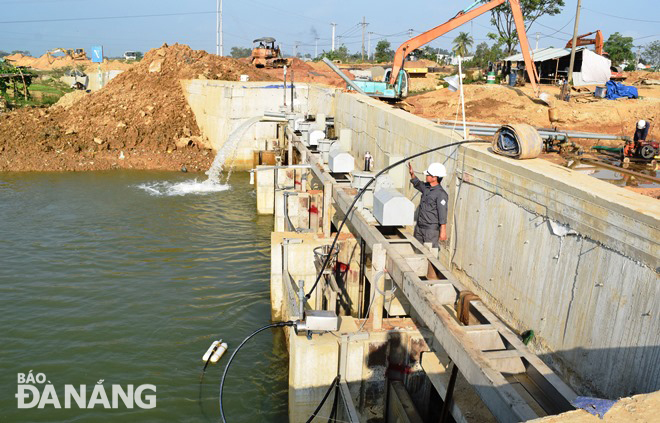Hydroelectric plants urged to discharge water amid salinity-triggered water shortage facing Da Nang
The salinity level measured at the raw water intake gates of the Da Nang-based Cau Do water plant, over recent days, has reached 1,000mg / l and above, and this concerning fact is expected to turn more complicated in the coming times if no solutions are taken in prompt fashion.
 |
| The highest salinity level recorded at the Cau Do water plant on April 6 reached 5,077mg / l, 17 times higher than the allowed limits. |
In a bid to tackle the aforementioned problem, the Vietnamese Ministry of Natural Resources and the Environment has requested the owners of hydropower reservoirs, namely A Vuong, Song Bung 2, Song Bung 4, Song Bung 4A, Song Bung 5 and Song Bung 6 to discharge water in line with the regulations regarding inter-reservoir operating process on the Vu Gia - Thu Bon river basin, a move to help Da Nang address the current deep-concerning salinity-triggered water shortage.
On April 6, the highest salinity level recorded at the Cau Do water plant reached 5,077mg / l, 17 times higher than the allowed limits, the highest since from early this year, which adversely affected tap water supplies for Da Nang.
Earlier, in late March, due to severe salinity and a very low water level of Yen River, many parts of the city experienced weak tap water pressure and flow, which stirred up public complaints.
It is known that the highest salinity level of tap water must be under 250mg/l, the safe salinity level for the mainland stipulated in the national technical regulations issued by the Vietnamese Ministry of Health regarding drinking water quality.
Reporting by HOANG HIEP – Translating by A.T